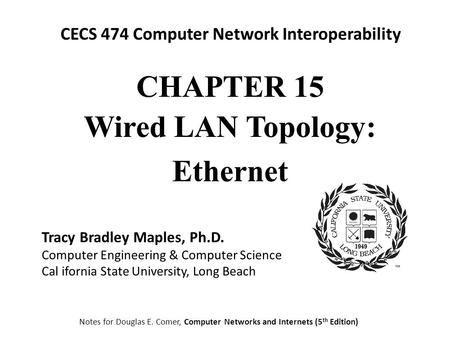Computer Networks And Internets Douglas E Comer Pdf To Jpg

• • • The Internet protocol suite is the and set of used on the and similar. It is commonly known as TCP/IP because the foundational protocols in the suite are the (TCP) and the (IP).
At a time when networking textbooks were mainly theoretical, Douglas Comer chose to write a textbook entirely focused on the TCP/IP protocol suite. [Comer1988], a difficult choice at that time. He later extended his textbook by describing a complete TCP/IP implementation, adding practical considerations to the theoretical. Computer Networks and Internets (6th Edition) [Douglas E. Comer] on Amazon.com. *FREE* shipping on qualifying offers. Appropriate for all introductory-to-intermediate courses in computer networking, the Internet.
It is occasionally known as the Department of Defense (DoD) model, because the development of the networking method was funded by the through. The Internet protocol suite provides specifying how data should be packetized, addressed, transmitted,, and received.
This functionality is organized into four which classify all related protocols according to the scope of networking involved. From lowest to highest, the layers are the, containing communication methods for data that remains within a single network segment (link); the, providing between independent networks; the handling host-to-host communication; and the, which provides process-to-process data exchange for applications. Specifying the Internet protocol suite and many of its constituent protocols are maintained by the (IETF). The Internet protocol suite predates the, a more comprehensive reference framework for general networking systems. A, used for the first three-way transmission.
The Internet protocol suite resulted from research and development conducted by the Defense Advanced Research Projects Agency () in the late 1960s. Slick Rick The Great Adventures Of Slick Rick Rarer on this page. After initiating the pioneering in 1969, DARPA started work on a number of other data transmission technologies. In 1972, joined the DARPA, where he worked on both satellite packet networks and ground-based radio packet networks, and recognized the value of being able to communicate across both. In the spring of 1973,, the developer of the existing ARPANET (NCP) protocol, joined Kahn to work on open-architecture interconnection models with the goal of designing the next protocol generation for the ARPANET. By the summer of 1973, Kahn and Cerf had worked out a fundamental reformulation, in which the differences between local network protocols were hidden by using a common, and, instead of the network being responsible for reliability, as in the ARPANET, this function was delegated to the hosts. Cerf credits and, designer of the network, with important influences on this design. The protocol was implemented as the Transmission Control Program, first published in 1974.
Initially, the TCP managed both transmissions and routing, but as the protocol grew, other researchers recommended a division of functionality into protocol layers. Advocates included of the University of Southern California's, who edited the (RFCs), the technical and strategic document series that has both documented and catalyzed Internet development. Postel stated, 'We are screwing up in our design of Internet protocols by violating the principle of layering.' Encapsulation of different mechanisms was intended to create an environment where the upper layers could access only what was needed from the lower layers. A monolithic design would be inflexible and lead to scalability issues. The Transmission Control Program was split into two distinct protocols, the Transmission Control Protocol and the Internet Protocol. The design of the network included the recognition that it should provide only the functions of efficiently transmitting and routing traffic between end nodes and that all other intelligence should be located at the edge of the network, in the end nodes.